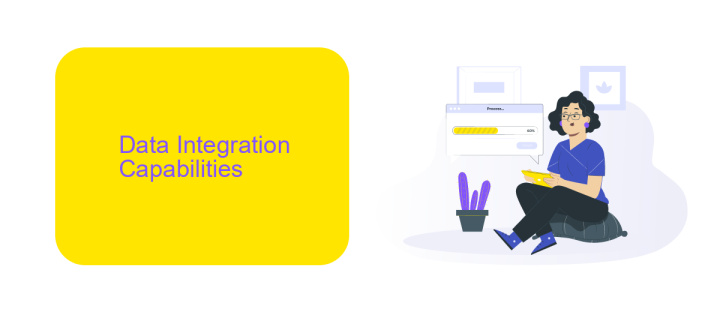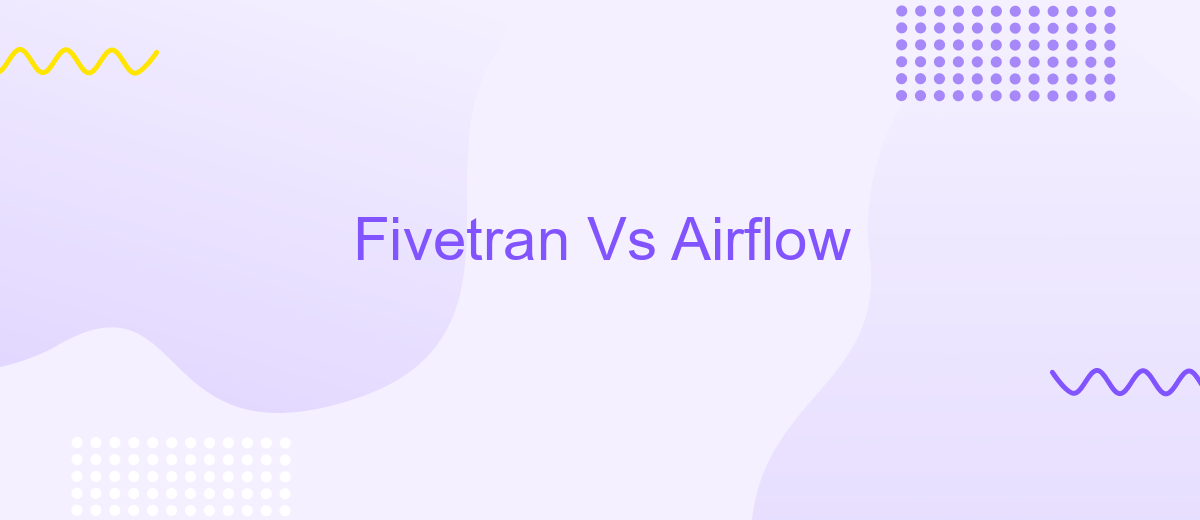Fivetran Vs Airflow
In the realm of data integration and workflow automation, two tools often come into the spotlight: Fivetran and Apache Airflow. Both offer unique capabilities for managing complex data pipelines, but they serve different purposes and excel in distinct areas. This article delves into the key differences, strengths, and use cases of Fivetran and Airflow, helping you decide which is best suited for your needs.
Introduction
In today's rapidly evolving data landscape, businesses are constantly seeking efficient ways to manage and orchestrate their data workflows. Two prominent tools that have emerged in this space are Fivetran and Apache Airflow. Both offer unique capabilities to streamline data integration and automation, but they cater to different needs and use cases.
- Fivetran: Specializes in automated data pipelines with minimal configuration.
- Apache Airflow: Provides a highly customizable workflow orchestration platform.
- ApiX-Drive: Offers a user-friendly interface for setting up integrations without coding.
Understanding the strengths and limitations of each tool is crucial for making an informed decision. Whether you need a plug-and-play solution like Fivetran, a highly flexible platform like Airflow, or an easy-to-use integration service like ApiX-Drive, this article will help you navigate through the options to find the best fit for your data workflow needs.
Data Integration Capabilities

Fivetran offers a robust data integration platform that automates the process of data extraction, loading, and transformation. It supports a wide range of data sources, including databases, applications, and cloud services, ensuring seamless and reliable data movement. Fivetran’s automated schema management and incremental updates ensure that your data is always up-to-date without the need for manual intervention. This makes it an ideal choice for businesses looking to streamline their data integration processes and focus on analytics rather than data wrangling.
On the other hand, Apache Airflow is an open-source workflow automation tool that excels in orchestrating complex data pipelines. While it provides extensive flexibility and control over data workflows, it requires significant setup and maintenance effort. Users need to define tasks and dependencies in Python code, which can be powerful but also requires more technical expertise. For those seeking a middle ground, services like ApiX-Drive can simplify integration setup, offering a user-friendly interface to connect various applications and automate data flows without extensive coding, thereby bridging the gap between Fivetran’s automation and Airflow’s flexibility.
Cloud Support and Scalability

When it comes to cloud support and scalability, both Fivetran and Airflow offer robust solutions tailored to different needs. Fivetran provides a fully managed data integration service that seamlessly scales with your data requirements, ensuring consistent performance without manual intervention. It supports a wide range of cloud platforms, making it an ideal choice for businesses looking for a hassle-free, scalable solution.
- Cloud Compatibility: Fivetran supports major cloud providers like AWS, Google Cloud, and Azure, ensuring seamless integration across different environments.
- Scalability: Fivetran automatically scales resources to handle increasing data volumes, providing a smooth experience without the need for manual adjustments.
- Airflow: While Airflow offers flexibility and control over data workflows, it requires manual scaling and configuration, which can be resource-intensive.
- ApiX-Drive Integration: For businesses needing additional integration capabilities, ApiX-Drive can be used alongside these tools to automate and manage data flows efficiently.
In summary, Fivetran excels in providing a fully managed, scalable solution with robust cloud support, ideal for businesses seeking simplicity and efficiency. Airflow, on the other hand, offers greater flexibility and control but demands more manual effort for scaling and configuration. ApiX-Drive can complement both platforms by offering additional integration capabilities, enhancing overall workflow automation.
Pricing and Licensing

When it comes to pricing and licensing, Fivetran and Airflow offer different models that cater to various needs. Fivetran operates on a subscription-based pricing model, where costs are determined by the volume of data processed and the number of connectors used. This makes it a flexible option for businesses of different sizes, as you only pay for what you use.
On the other hand, Apache Airflow is an open-source platform, meaning it is free to use. However, there are costs associated with its deployment and maintenance, such as server costs, developer time, and potential need for third-party integrations. This can make Airflow more suitable for organizations with in-house technical expertise and resources.
- Fivetran: Subscription-based pricing
- Airflow: Free and open-source, but with associated maintenance costs
- ApiX-Drive: Simplifies integration setup with various services
Additionally, for businesses looking to streamline their integration processes, services like ApiX-Drive can be invaluable. ApiX-Drive offers easy-to-use tools for setting up integrations without requiring extensive technical knowledge, thereby reducing the overall cost and complexity of managing data workflows.
Conclusion
In conclusion, both Fivetran and Airflow offer robust solutions for data integration and orchestration, but they cater to different needs and user expertise. Fivetran is ideal for those seeking a fully managed and automated data pipeline with minimal setup, making it a great choice for businesses that prioritize ease of use and quick deployment. On the other hand, Airflow provides a highly customizable and flexible platform, suitable for organizations that require intricate workflows and have the technical expertise to manage complex data processes.
When choosing between Fivetran and Airflow, it's essential to consider your organization's specific requirements and technical capabilities. Additionally, integrating a service like ApiX-Drive can further streamline the process by automating data transfers and enhancing connectivity between various applications. Ultimately, the decision should be based on the balance between ease of use, customization needs, and the level of control required for your data workflows.


FAQ
What are the primary differences between Fivetran and Airflow?
Which tool is better for real-time data integration?
How do Fivetran and Airflow handle data transformation?
Is it possible to use both Fivetran and Airflow together?
What are some alternative solutions for automating data integration and workflows?
Apix-Drive is a universal tool that will quickly streamline any workflow, freeing you from routine and possible financial losses. Try ApiX-Drive in action and see how useful it is for you personally. In the meantime, when you are setting up connections between systems, think about where you are investing your free time, because now you will have much more of it.

